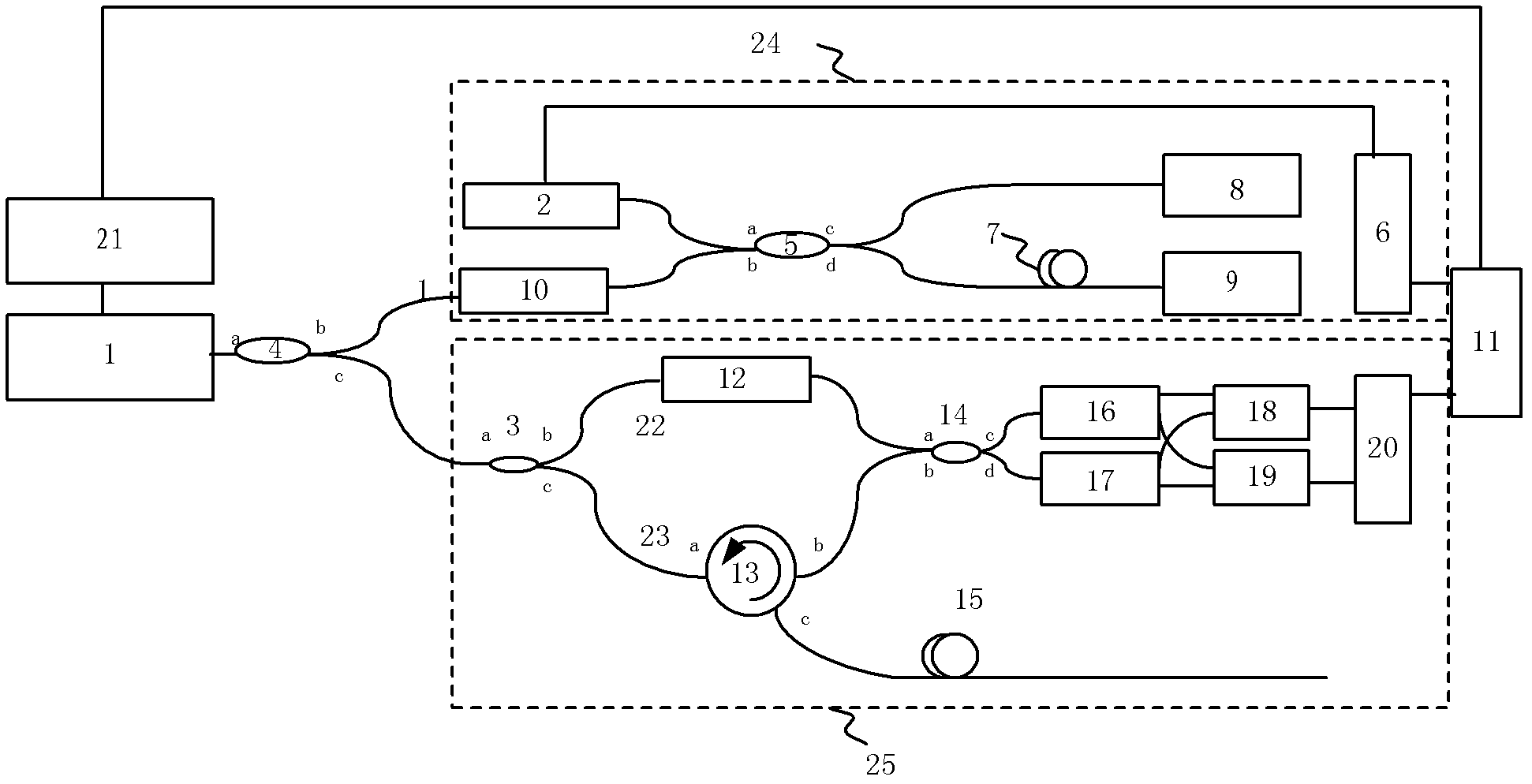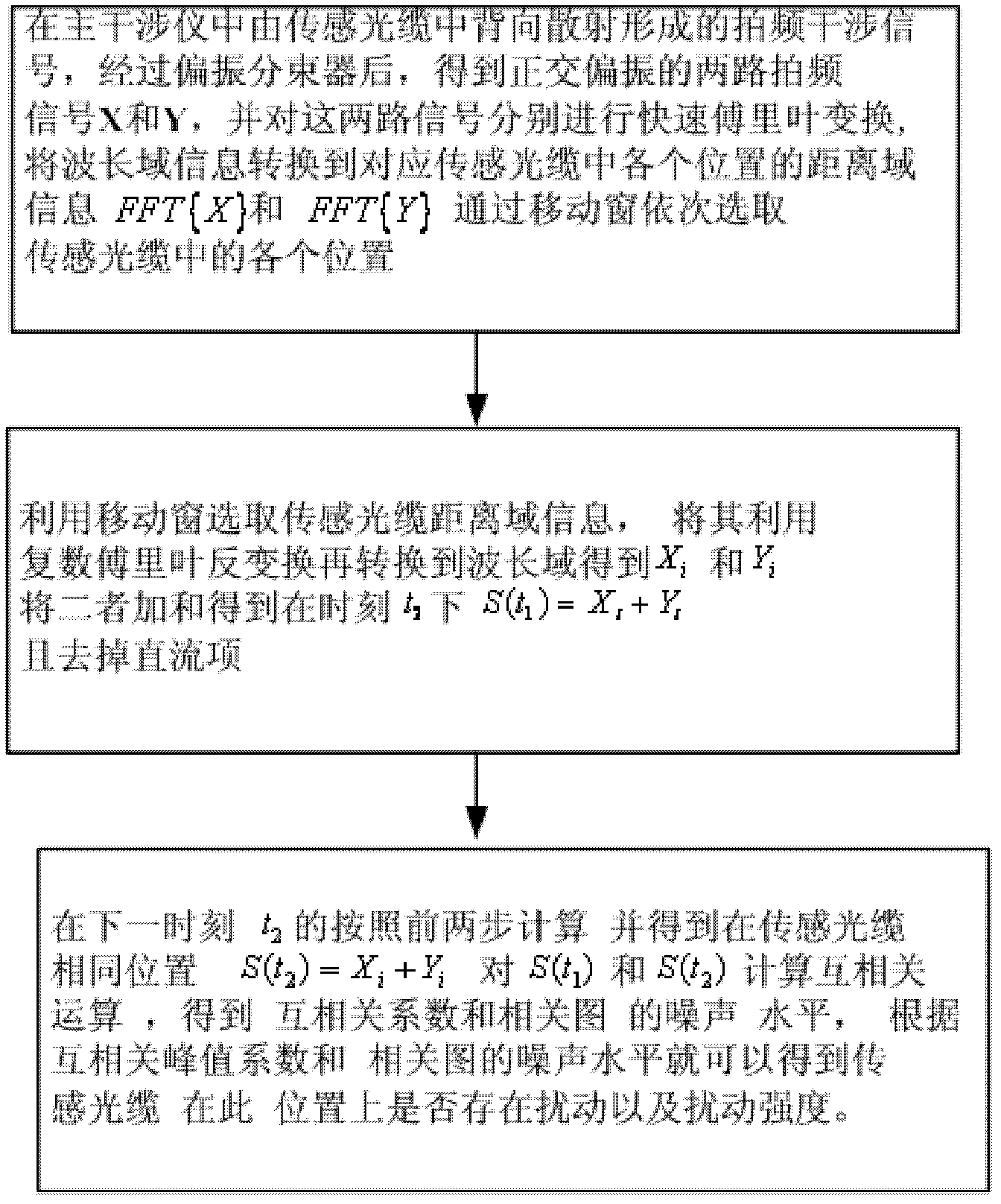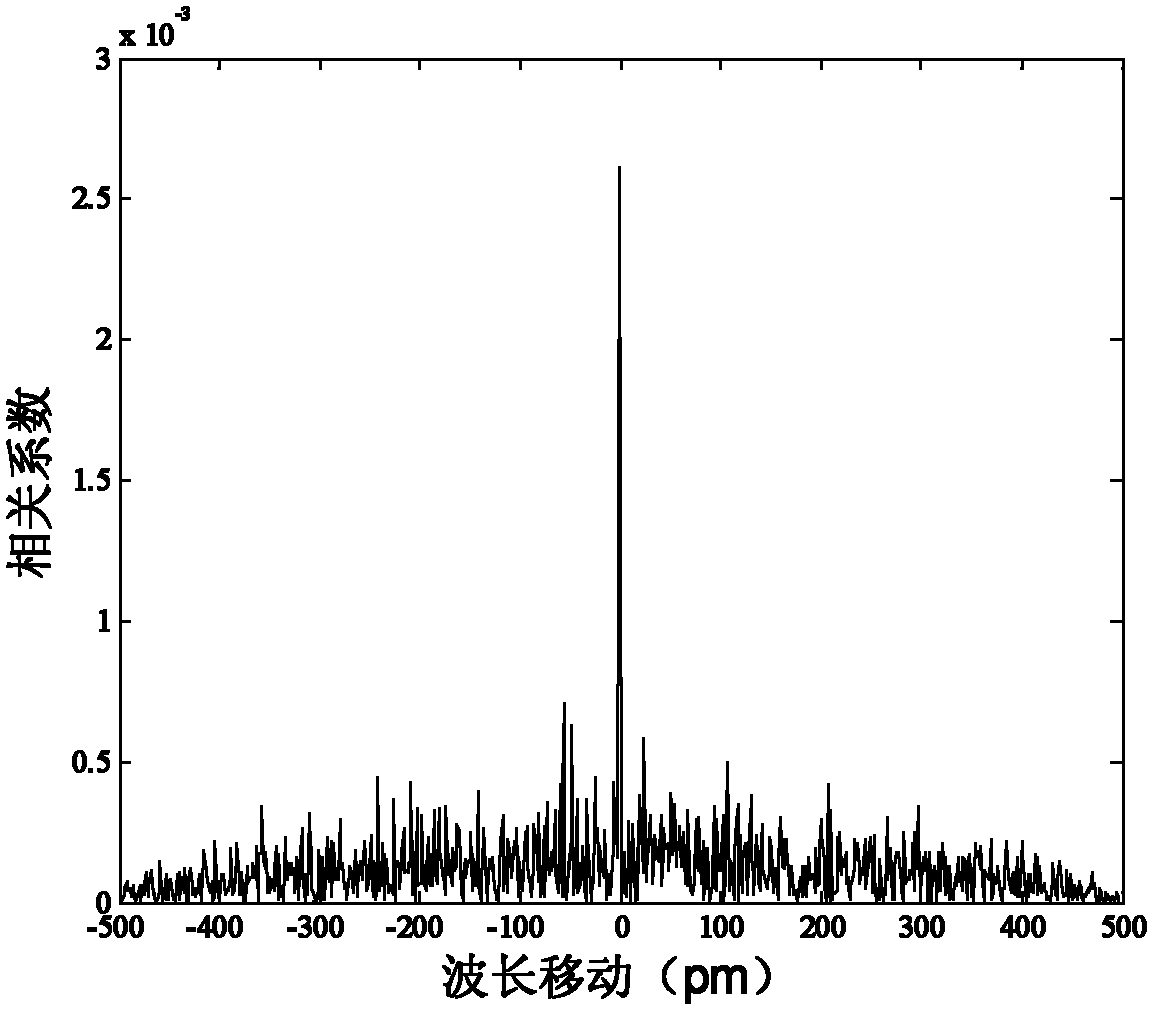Distributed disturbance sensor on basis of Rayleigh scattering spectrum related coefficient and demodulating method thereof
A technology of correlation coefficient and Rayleigh scattering, applied in the field of distributed disturbance sensing devices, can solve the problems of poor positioning accuracy
- Summary
- Abstract
- Description
- Claims
- Application Information
AI Technical Summary
Problems solved by technology
Method used
Image
Examples
Embodiment 1
[0022] Embodiment 1. Device for distributed disturbance sensing based on Rayleigh scattering spectral correlation coefficient
[0023] Such as figure 1 As shown, the device includes:
[0024] Tunable laser 1: used to provide light source for the optical frequency domain reflection system, the light source adopts ultra-narrow linewidth linearly tuned whispering gallery mode self-injection mode-locked laser light source, its optical frequency can be linearly scanned, and it is controlled by the tuning signal control module 21 , the module generates a triangle wave or a sawtooth wave to drive a tunable laser according to requirements
[0025] 1:99 beam splitter 4: the output light of laser 1 enters through port a of beam splitter 4, and is distributed from ports b and c to the clock trigger system 24 based on the auxiliary interferometer and main interferometer 25;
[0026] Auxiliary interferometer-based clock trigger system 24: realize equal optical frequency spacing sampling...
Embodiment 2
[0029] Embodiment 2. Demodulation method of distributed disturbance sensing based on Rayleigh scattering spectral correlation coefficient
[0030] Such as figure 2 As shown, the steps of the demodulation method of the present invention are:
[0031] In the first step, according to the principle of linear frequency modulation, the linearly tuned laser light generated by the tunable laser 1 enters the main interferometer 25, and in the main interferometer 25, the beat frequency is formed by the backscattered light in the sensing optical cable 15 and the reference light in the reference arm 22 After the interference signal passes through the polarization beam splitters 16 and 17, two paths of beat frequency interference signals X and Y of orthogonal polarization are obtained, and fast Fourier transform is performed on these two paths of signals respectively to obtain signals FFT{X} and FFT{ Y}, select each position in the sensing optical cable in turn through the moving window; ...
PUM
 Login to View More
Login to View More Abstract
Description
Claims
Application Information
 Login to View More
Login to View More - R&D
- Intellectual Property
- Life Sciences
- Materials
- Tech Scout
- Unparalleled Data Quality
- Higher Quality Content
- 60% Fewer Hallucinations
Browse by: Latest US Patents, China's latest patents, Technical Efficacy Thesaurus, Application Domain, Technology Topic, Popular Technical Reports.
© 2025 PatSnap. All rights reserved.Legal|Privacy policy|Modern Slavery Act Transparency Statement|Sitemap|About US| Contact US: help@patsnap.com



